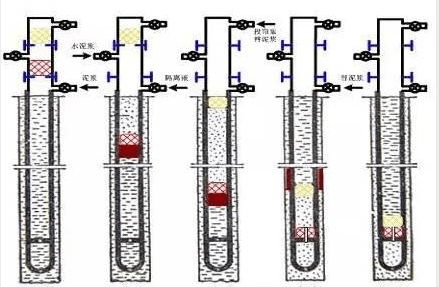Demand Accelerates Decline Affected by persistent heavy rainfall in southern regions, Typhoon "Butterfly," and construction…
Cementing is the operation of placing quality steel tubes and filling the wellbore and annulus of the steel tubes for the purpose of strengthening the wellbore, ensuring continued safe drilling, sealing off oil, gas and water zones, ensuring stratification testing during exploration, and reasonable production of oil and gas throughout the production process.

Purpose of cementing
- Sealing complex strata that are prone to collapse and leakage, consolidating the drilled boreholes and ensuring the smooth drilling;
- Provide the basis for installing the wellhead device, control the wellhead spray and ensure that the well mud outlet is higher than the mud pool to facilitate the flow of drilling fluid back to the mud pool;
- Sealing oil, gas and water layers to prevent the interchanneling of oil, gas and water layers with different pressures, thus providing favorable conditions for the normal exploitation of oil and gas;
- Protect the fresh water resources in the upper sand layer from the pollution of oil, gas, salt water and other liquids in the lower strata;
- After the well is put into production, favorable conditions are created for acid fracturing stimulation;
Steps of cementing
- Puttingcasing
The casing is different from the drill pipe, which is run in one time. There is no thickening part, and the length is not strictly stipulated. In order to ensure the quality of cementing and the smooth underground casing, the structure design of casing string should be done. According to the
Design casing strength, determine casing wall thickness, steel grade, and thread type.
- Cement injection
Cement is a key process after casing is put into the well, and its function is to seal up the annular space between casing and wellbore wall, so as to seal off the oil, gas and water layer, and make casing become the passage of oil and gas to the well.
- Wellhead installation and casing pressure test
After cementing the casing, the wellhead is installed while the cement is setting. The casing head shell shall be installed at the top of the surface casing. The top of each layer of casing is hung into the casing head, which is used primarily for support
Technical casing and reservoir casing weight, which is particularly important if cement does not return to the surface. The casing head is also used to seal the annular space between the casing to prevent pressure from flowing through each other. The casing head is still the blowout preventer and oil
Transition connection of pipe head. On land, the casing head also has two side openings that can be used to refill the cement and monitor well conditions. Injection of balance fluid and other operations.
- Check cementing quality
After installing the casing head and connecting the blowout preventer and the blowout preventer, check the pressure resistance of the casing head seal and test the sealing pressure of the connection with the blowout preventer. The pressure check of the casing string should be done after the cement plug in the casing is explored
Check, after drilling through the casing shoe 2~3 meters (technical casing) to do formation fracturing test. The production well is inspected for the cement ring, using sound waves to detect the bond between the cement ring and the casing and borehole wall. The cementing quality
After all the indicators of the quantity qualified, it can enter the next operating procedure.





